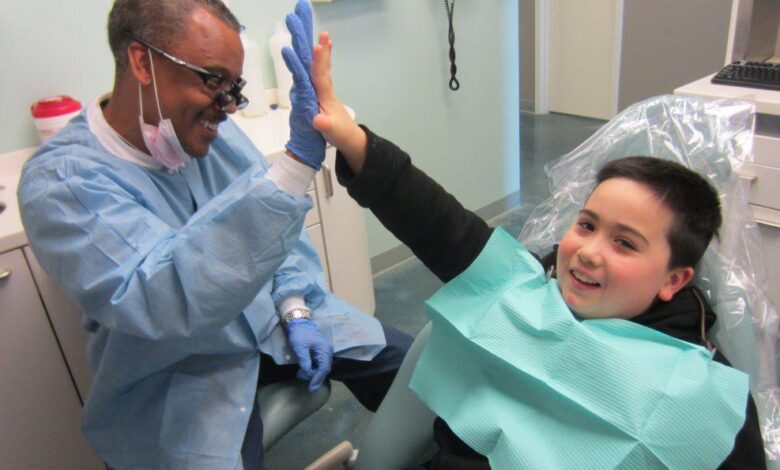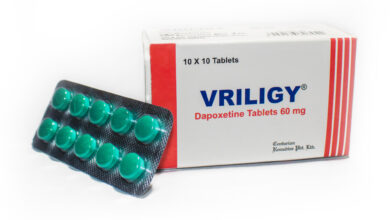11 Common General Dentistry Procedures for Optimal Oral Health

Did you know that the global dental services market size is expected to hit around $731.59 billion by 2033?
Dental services are crucial for maintaining healthy teeth and gums. As the saying goes, prevention is better than cure. Regular dental check-ups and procedures can help avoid more serious problems in the future.
In this article, we’ll discuss 11 common general dentistry procedures that can help keep your mouth in optimal condition. Read on to help you understand what these procedures entail and how they can benefit your oral health.
1. Dental Cleanings
Professional dental cleanings are essential for routine dental care. It removes plaque and tartar build-up that regular brushing and flossing can’t eliminate.
During a cleaning, your dentist will also check for any cavities or gum disease signs. It’s recommended to have a dental cleaning every six months. This can help prevent tooth decay and other oral health issues.
2. Fluoride Treatments
Fluoride is a mineral that helps strengthen the enamel of your teeth and prevents tooth decay. During a fluoride treatment, your dentist will apply a concentrated fluoride gel or foam on your teeth. It’s then left to sit for several minutes before being rinsed off.
Fluoride treatments are especially beneficial for children. It can help protect their developing teeth from cavities. Adults can also benefit from fluoride treatments to prevent tooth decay.
3. X-Rays
X-rays are a crucial diagnostic tool in dentistry. They allow your dentist to see areas of your mouth that can’t be seen during a visual exam. These images help identify any potential issues with your teeth or jawbone.
Modern dental X-rays use low levels of radiation. This makes them safe for patients of all ages. Your dentist will determine how often you need X-rays. It’s based on your age, oral health, and risk factors.
4. Fillings
Fillings can repair damaged or decayed teeth. During this procedure, your dentist will remove the decayed portion of the tooth. They then fill the space with a filling material. This can be composite resin, porcelain, or amalgam.
Fillings can help prevent further decay and restore the function of the affected tooth. It’s essential to address cavities promptly before they lead to more severe issues.
5. Crowns
Crowns are tooth-shaped caps that cover a damaged or decayed tooth. They restore the shape, size, and strength of the tooth while improving its appearance. Crowns can be made from different materials such as porcelain, gold, and metal alloys.
Your dentist may recommend a crown to protect a weak tooth or hold together parts of a cracked tooth. It’s also used after root canal treatment to strengthen the affected tooth.
6. Root Canal Therapy
Root canal therapy is a procedure to treat an infected or inflamed pulp inside your tooth. During this procedure, your dentist will remove the infected tissue. They will clean out the root canals thoroughly.
After cleaning, they will fill and seal the canals with a rubber-like material. A crown is then placed on top to protect the treated tooth. Root canal therapy can save your natural tooth from extraction.
7. Tooth Extractions
Tooth extractions are necessary when a tooth is damaged beyond repair or poses a risk of infection to other teeth. It’s also done for impacted wisdom teeth that don’t have enough room to emerge properly.
Tooth extractions may sound intimidating, but they are typically quick and painless procedures. Your dentist will provide you with post-extraction instructions to aid in healing. They will also discuss tooth replacement options if needed.
8. Dental Implants
Dental implants are a popular tooth replacement option for missing teeth. They consist of a titanium post that is surgically placed into the jawbone and topped with an artificial tooth. The result is a natural-looking and functioning tooth.
Dental implants have many benefits, including preserving bone density in the jaw. It can also improve the appearance of your smile.
However, they do require surgery. It’s essential to discuss all factors with your dentist before deciding on this procedure.
9. Dentures
Dentures are removable replacements for missing teeth and surrounding tissues. There are two types of dentures: complete and partial. Complete dentures replace all teeth while partial dentures are used when some natural teeth remain.
Dentures can help improve chewing and speaking abilities, as well as restore facial structure and appearance. They require regular cleaning and maintenance to ensure their longevity.
10. Teeth Whitening
Teeth whitening is a cosmetic dental procedure that can brighten and enhance the appearance of your smile. It involves using bleaching agents on the teeth to remove stains and discoloration.
This procedure is safe, quick, and effective in improving the shade of your natural teeth. Your dentist may offer an in-office treatment or provide take-home options for you to use at your convenience.
They will also discuss ways to maintain your whitened teeth and avoid staining in the future. This may include avoiding certain foods and drinks or using touch-up treatments periodically.
11. Dental Sealants
Dental sealants are a preventive procedure that involves applying a thin, plastic coating over the chewing surfaces of molars and premolars. This helps protect these teeth from decay by sealing out food particles and bacteria.
Sealants are typically recommended for children as soon as their permanent molars erupt. However, adults can also benefit from this procedure to prevent cavities in hard-to-reach areas.
To help you with these types of dental procedures, make sure to find a reliable and trustworthy dental clinic. You can check experts like Smileworks dental services to help you narrow down your options. They offer a wide range of dental procedures, including the ones mentioned above.
Understanding the General Dentistry Procedures
Regular dental care is necessary for maintaining optimal oral health. Make sure to visit your dentist and discuss any concerns you may have about your teeth and gums. With these common general dentistry procedures at your disposal, you can maintain a healthy and beautiful smile for years to come.
Remember, prevention is key, so don’t wait until it’s too late. Start taking care of your oral health today! Your smile is an important asset, so give it the care and attention it deserves.
Did you find this blog post helpful? If so, feel free to explore more of our blog!



